Due to high demand, we currently have a waitlist for accepting new clients. Join our waitlist for 2024 here.
The path your customer will take on their journey to making a purchase.
Nobody likes prospecting cold leads.
The low conversion rates, the hostile gatekeepers, the uncomfortable conversations, and of course the neverending struggle to reach monthly targets.
The great news is, with a smart approach to digital marketing your business might never have to deal with cold outreach again.
With the right digital strategy you can create a marketing funnel that will have qualified leads practically knocking at your door. Reconfiguring your
funnel to meet the demands of modern consumers will result in a higher number of better quality leads – freeing up your time and improving your
bottom line.
Conversely, if your funnel is underperforming it’s likely to be you doing all the hard work.
We’re Flow Marketing, and we love helping businesses grow. As New Zealand’s experts in lead generation, we’ve put together this handy cheat
sheet for creating best-practice funnels – so you can easily start generating more warm leads for your business.
A marketing funnel is essentially the path your customer will take
on their journey to making a purchase. This is usually broken down
into four or five key stages:

Your customer has recognized that they have a problem, and are ready to start looking into solutions to fix it.
Your customer has identified a number of options as potential solutions to their problem, and are deciding which of these will be the best fit.
The customer has completed their research and identified your business as the best solution, resulting in a sale. Congratulations!
Your work doesn’t end there – this final stage is dedicated to the post-purchase experience, delivering a level of ongoing service which will turn your customers into loyal brand advocates.
As a solution provider, you’ll want to reach your audience at multiple points throughout the buyer’s journey. If set up correctly, your marketing funnel will help you deliver the right message, to the right audience, at the right time; minimising effort while maximising the chance of making a sale
The wrong funnel, on the other hand, might just send your customers packing.
Let’s take a look at two different funnels, a traditional vs digital approach.
A traditional marketing funnel (one which hasn’t been optimised for digital channels) will usually look something like this:

In this example, traditional forms of marketing (outdoor, print, radio etc) are used to generate brand awareness at the top of the funnel. Direct sales, personal connections and any organic traffic then engage an audience further along the path to purchase.
This approach involves a lot of outreach to bridge gaps in customer information, taking up loads of your time and producing little in the way of
measurable ROI.
Tackling sales in this way made sense before the rise of the internet and digital marketing. Businesses had limited ways to prospect leads, meaning they were left with little option but to cold call and go door-to-door.
And frankly, at the time this direct outreach model was fantastic for salespeople, as it put all of the power in their hands. Less access to information meant that customers couldn’t easily research alternatives, which in turn meant that it was easier to convert sales.
With almost unlimited information just a Google search away, more and more customers are researching how to solve problems on their own. If your brand doesn’t have a digital presence it’s unlikely that future customers will be able to find you. And if you’re out there contacting them before they’re ready, the best you can hope for is an unengaged lead with a lot of wasted time and effort from your end.
Which brings us to a new, digital-centric version of the marketing funnel.
Today, the power has shifted to the customer. Over half of all consumers say they’ll always do research before buying, to ensure they’re making the best
choice.
There are multiple ways for potential leads to discover and educate themselves on your brand before they even get in touch with your sales team. This is why it’s critical to engage with your customers using quality content, and doing so across multiple channels and at various stages of the buyer’s journey.
Successful marketing is diversified across multiple channels. Used correctly, Google, social and organic marketing will work in harmony to deliver content to your customers at multiple stages of the buyer’s journey.

This can often be cheaper than you think. Flow can help you forecast expected costs based off your growth goals.
Most users won’t buy something on their first visit to your website, so it’s important to capture their data and remarket to them to keep your brand top of mind until they’re ready to convert. Using a piece of attractive content (often called a lead magnet) or a promotion can help this process by generating quality leads which can then be nurtured by remarketing, email, or your sales team – ensuring they develop a lasting relationship with your brand.
Following this approach will ensure you’re delivering the right information, at the right time, to the right place, maximising your opportunities for conversions.
Is your current marketing strategy harming your bottom line? Use our calculator to find out and discover what you need to grow.
Is your marketing strategy due a refresh?
Here are three stages we recommend to help optimise your funnel, so you can start generating more qualified leads:

Firstly, you should get an idea of where your business is currently sitting, so that you can benchmark for future goals and KPIs.
Can’t be bothered figuring it out yourself?
Next, you’ll want to set up your future targets. Start by selecting the KPIs that are most important to your business.
Revenue is – rather unsurprisingly – often the most important goal to set. Make sure to set a revenue goal that will stimulate growth while being realistic to current and past performance.
From there, you can calculate how many new leads are required to achieve your revenue target (based off your current close rate).
Is your brain melting yet?
Finally, you’ll need to calculate how much traffic you need, to achieve your goals. Most lead generation campaigns will achieve an average 2-5% inquiry rate (20-50 inquiries per 1,000 visits).
If you’re serious about maximising ROI, there are a number of variables you’ll need to get right. One of these is having a deep understanding of the journey your customer takes to purchase.
Once you understand your customers’ motivations for seeking out your product or service, you can start to address their problems more strategically with content that resonates.
Is your content resonating with your customers?
Examples
Let’s take a quick look at some example lead generation strategies.
In this example, a property valuer in Auckland is looking to build their business to a point where they can hire a third staff member. This would require an increase in revenues of 50%. Here’s what they need to do:
Let’s say our property valuer does their valuations for $1000.
Current monthly revenue is $20,000 and roughly 50% of sales inquiries turn into a paying client.
Our key goal is to grow revenue to $30,000 per month, which will mean the owner can hire a third team member and spend less time working in the business.
Based on current numbers, they would need at least 20 more inquiries per month, to convert 50% and make 10 extra sales ($1,000 each).
This works out to be a requirement of at least 1,000 extra website visitors at a 2% inquiry rate. To achieve this, we’d recommend first reviewing customer data to help clarify who to target, and across which channels.
NB: The cost to generate additional traffic can be pre-calculated (either internally or through an agency like Flow), This will give you more confidence that your campaign will deliver a positive ROI.
Our second example helps a small, high-end private school determine what it will need to do, in order to expand to a point where they can build a new sports facility on campus.
The school’s current monthly revenue is $500,000.
Roughly 50% of people who book a school tour on the website will enrol their child, averaging $2,500 per month, per student.
Building a new sports facility will require revenue of $600,000 per month.
To create the additional $100,000 of monthly revenue and achieve their goal, the school will need 40 new enrolments within the next 4 months (roughly 10 per month).
The website currently has a 2% conversion rate – for every 1,000 visitors, 20 would usually book a school tour.
The school will need to drive an extra 1,000 monthly website visits to generate 20 new school tours, 50% of which will enrol, delivering the revenue needed to build the new facility.
These numbers are simplified and intended to be used as an example only. Your own traffic volumes and conversion rates will likely differ greatly, but this should give you a framework for optimising your funnel and developing your own lead generation strategies.
If you want to make your marketing funnel work for you, it’s important to remember the value of digital marketing and that your customers aren’t coming from just one place.
Your lead generation strategy should span different channels, so that you can deliver the right content at the right time.
Having this process set up correctly should create a funnel that feeds you qualified, warm leads. So you can free yourself from cold calling, and focus on the things that matter in your business
Keen to soup-up your sales funnel?
As New Zealand’s leading lead generation agency, we know it can be tricky to get your digital marketing delivering the highest ROI.
At Flow, we have a complete done-for-you funnel building and implementation approach, covering a full range of digital marketing and lead generation services, including:

If you need help with any of the above, don’t hesitate to get in touch with the pros here at Flow Marketing.
"*" indicates required fields
Claim your free 30 min discovery call by filling out the form below.